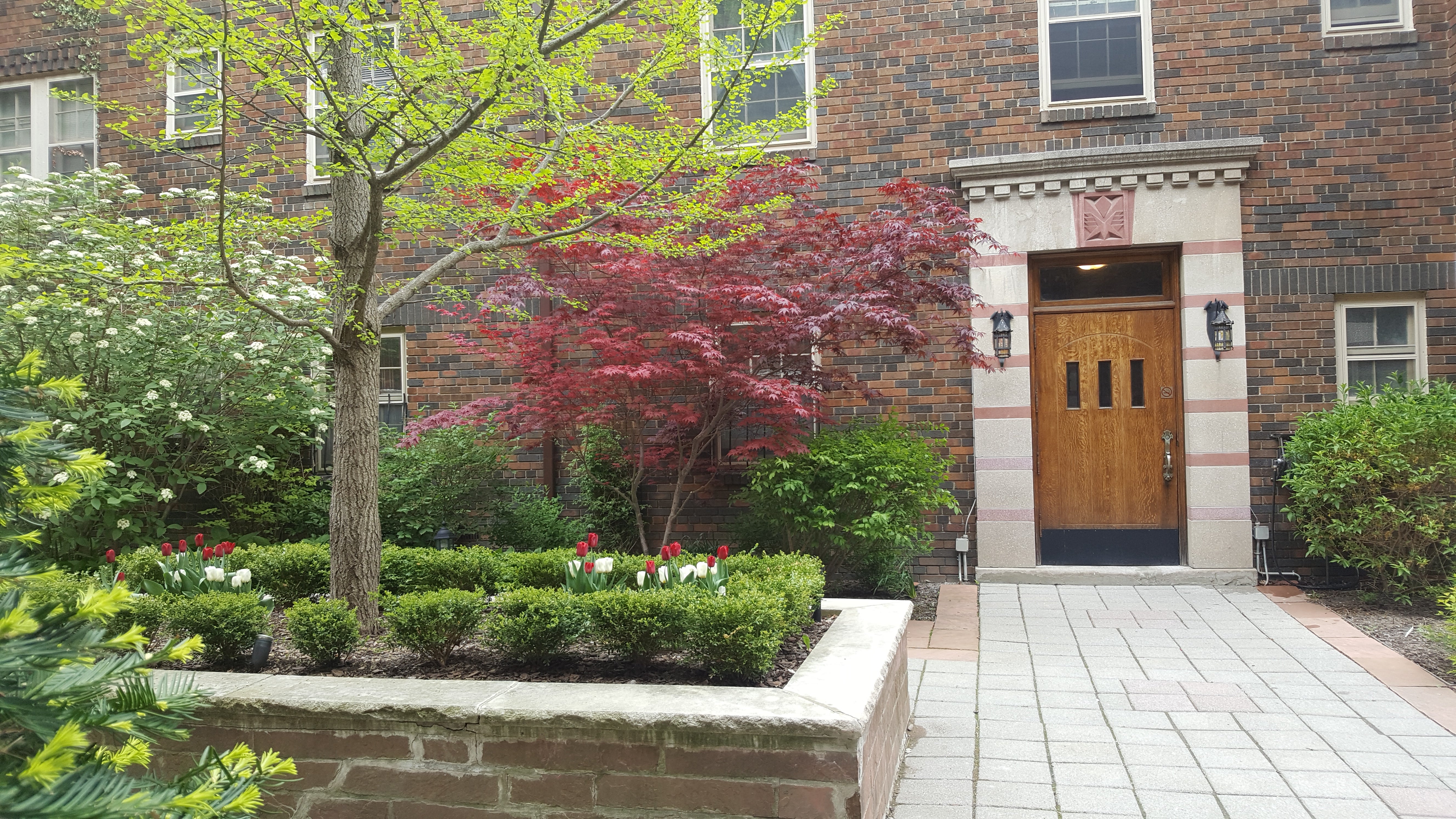Menu

Alternatives to Boxwood
Alternatives for Boxwood Hedges

Are you disappointed with the performance of your boxwood? Little evergreen hedges surrounding gardens are popular in many of Toronto's neighbourhoods. Unfortunately, there are several pests that are affecting our boxwood. I would not recommend planting any boxwood at the moment. You are simply asking for a future of fighting boxwood psyllid, boxwood leafminer, box tree moth. and boxwood blight. The boxtree moth showed up in Toronto a couple of seasons ago, eats entire hedges in the blink of an eye, and has several generations of caterpillars every season. You can learn more at Inspection Canada's website: https://inspection.canada.ca/plant-health/invasive-species/insects/box-tree-moth/fact-sheet/eng/1552914498593/1552914498889 In my opinion boxwood are simply not worth it. I really feel for people who have spent big money on boxwood hedges only to have them attacked by these pests.
Lets find some other options for your garden.
Inkberry - Ilex glabra

I think we will be hearing many people suggest inkberry as a substitute for Boxwood. It is native to the Eastern US and Canada (although not here in Ontario), evergreen, and has small shiny leaves. Be warned, it thrives in acidic soil. If its soil is too alkaline, then it is subject to yellowing. We see this commonly for other types of holly in Toronto. It is possible to amend soil to increase your soil's acidity, but you need to do it annually. None the less, I learned this week that there is a beautiful hedge of it by Women's College Hospital, if you want to go take a look. I don't have any personal experience with inkberry. Please, let me know how it is working for you, and if you think it should be recommended.
Yews - Taxus
Yews are certainly a possibility. I would select Dense Yew (Taxus x media 'Densiformis) or Dwarf Japanese Yew (Taxus cuspidata 'Nana') as the best best. However, yews would prefer to grow to more than a meter high, and almost 2 meters wide. Both of these make fantastic larger hedges, of the 1 meter scale, but can be difficult to keep as small hedges of the 30cm scale. If you do plant a yew hedge I recommend that you scout regularly for mealy bugs, who seem to love them. Yews make great hedges because they are one of the few evergreens that will rejuvenate from dead wood - so if you have an overly rambunctious day with your hedge trimmer all is not lost.
Cedars - Thuja
Cedars take very well to shearing and can also made a good evergreen hedge. There are several different tiny cultivars available. An old standby is the Danica cedar, which naturally grows to into an 80cm ball. If you start with a small sized shrub, you could keep these to as a small hedge. The smaller ball cedars do have a tendency to break open under the weight of snow. So, you may want to consider a plan for winter. Options include a small burlap cover (but then why plant an evergreen just to cover it up), supportive string around each shrub, or simply making a habit of knocking off the snow after each snowfall. If your cedars do fall open over the winter, then you can tie them back together in the spring. I use a biodegradable string on the inside to pull the branches back upright, and allow the shrub growth to fill in. Cedars are not a good option if you have deer browsing your garden, but if that's you, then you probably already know that.
Lavender - Lavandula

Maybe it's time to consider some different looks. Lavender is actually a small shrub, and keeps its look through the winter. The soft grey green foliage off sets darker green perennials very well, and it only needs one major prune in May to tidy it up for the season. Lavender requires lots of sun and well drained soil. If you plant a hedge, I recommend that you use one of the older standard cultivars, because very few years you will probably need to replace a plant or two and you'll want to be able to match. Hidcote Superior and Munstead are both varieties that are hardy in Toronto and widely available.
Sedge Grases - Carex

Someone told me once there there is a sedge for every garden. There are literally hundreds of different sedges - some for sun and some for shade. They will keep their green through the winter, or green up quickly in the spring. Many of the sedges are native to Ontario, and more natives are coming onto the market all the time. Although we usually think of flowering plants to support our local insects, grasses provide great winter habitat and many butterflies use them for parts of their life cycle. Commonly available Plantain Leaved Sedge Carex plantaginea), Oak Sedge (Carey pensylvanica), and Bristle leaf Sedge (Carex eburnea) would make a great garden edge. You may want to leave some space between your lawn and edger plants in this case, to set them apart visually.
No Hedge at all

On our small urban lots, your hedge may be taking up a disproportionate amount of space. I'm not even going to discuss the disproportionate amount of maintenance time spent shearing and feeding and generally fussing over them. My personal preference is to do away with this look all together, and use that space to add more varied perennials to your garden. Imagine if every boxwood in Toronto was replaced with a few native flowering plants - we'd have an instant butterfly way throughout the city linking the ravines and parks where many of our native insects struggle to survive. One of the biggest problems is that while a small area can support a small population of some insect, it is much more precarious than if it is linked to another small area where 2 populations can intermix, or move if one area is threatened. This is why creating pathways between wild areas is critical to supporting our native insects. If you are facing the prospect of replacing your boxwood hedge, I urge you to consider having no hedge at all. Take back that extra space and do something more creative.
- Choosing a selection results in a full page refresh.


